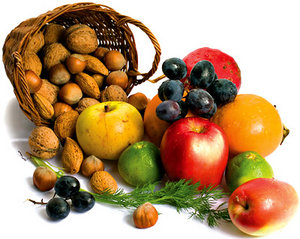A reasonable recommendation is for 80 percent to 100 percent of our calories to come from vegetables, fruit, raw nuts, potatoes, and either lean or omega-3 protein sources including fish, lean meat, skinless chicken, wild game, grass-fed animals and omega-3 eggs.
Spices such as garlic, ginger, turmeric, oregano and the other popular spices are all anti-inflammatory. The best oils/fats to use in moderation are extra-virgin olive oil, coconut oil and butter.
Our focus should be on correcting the 80 percent of calories that come from sugar, refined grains, oils and obese meat. Worrying about yogurt, the occasional bran muffin, a cup of coffee, etc., has little influence compared to the tsunami of inflammation created by the 80 percent of calories derived from inflammatory foods.
Another key to reducing dietary trauma and inflammation is to eat appropriate amounts for your body. In general, overeating leads to an inflammatory response.
Avoid Dietary Extremism
 If you currently snack on bags of inflammation and regularly do "drive-through self-shootings" at fast-food restaurants, you likely will view a life of eating anti-inflammatory foods as somewhat extreme. In actuality, the anti-inflammatory foods described above are not extreme at all and are completely consistent with our biochemical and physiological needs.
If you currently snack on bags of inflammation and regularly do "drive-through self-shootings" at fast-food restaurants, you likely will view a life of eating anti-inflammatory foods as somewhat extreme. In actuality, the anti-inflammatory foods described above are not extreme at all and are completely consistent with our biochemical and physiological needs.
If you're eating 80 percent or more of your calories from sugar, flour/grains, refined oils and obese meat, you're a dietary extremist. For many, the mere thought of giving up bread and pasta is too much to bear.
On the other hand, assuming 85 percent to 90 percent of your calories are anti-inflammatory, have fun with the remaining 10 percent to 15 percent of calories borne of foods from the dark side. Don't become an anti-inflammatory diet extremist and make eating healthy a stressful event.

David Seaman, MS, DC, DACBN, is the author of Clinical Nutrition for Pain, Inflammation and Tissue Healing. He has a master's degree in nutrition from the University of Bridgeport, Conn., and lectures on nutrition.

